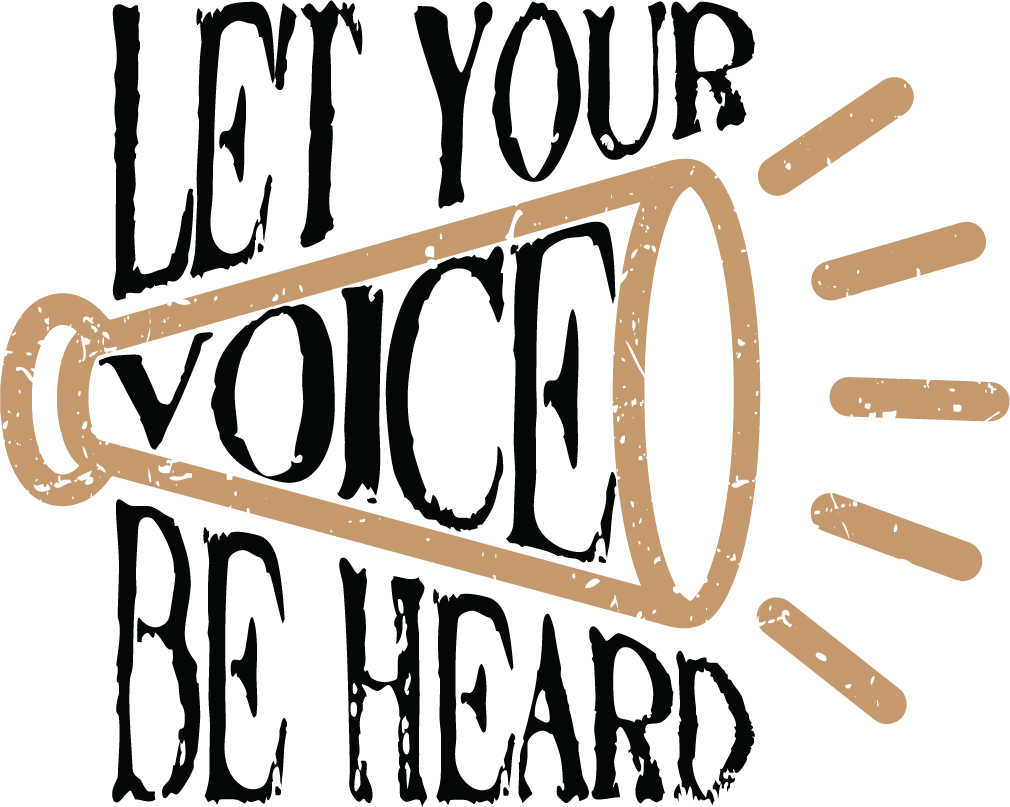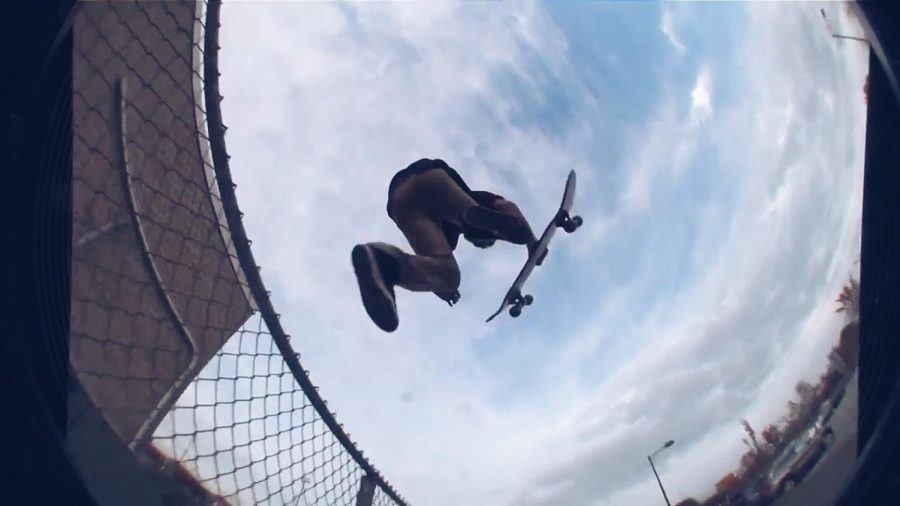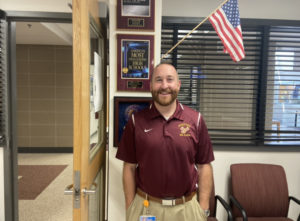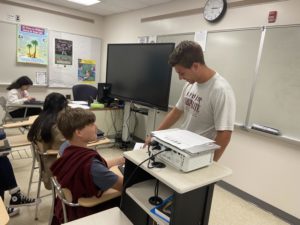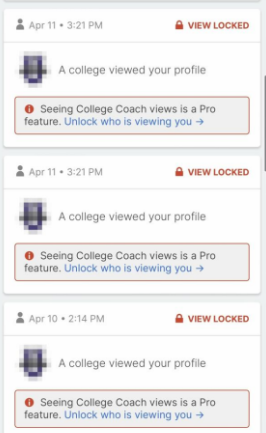Skater Charlie Speno hits the half-pipe
Photo provided by Charlie Speno
Speno performs a “caveman” at Anne Arundel Community College. He set the board in position with his hands and jumped on it.
January 16, 2018
“Skateboarding is training, but I don’t think of it as training. It’s fun.”
- Shaun White, professional skateboarder
Born on the West Coast, skateboarding became popular in the 70’s. Originally, it began with transition skating, or “vert,” where riders move from the horizontal (on the ground) to the vertical (on an incline). This type of skating included skating drained pools, half pipes*, and other objects you could throw yourself onto.
This idea of “surfing on land” attracted attention.
Eventually, skateboarding spread to the East Coast, and interested one of our own: Charlie Speno (’18).
Speno, after not enjoying lacrosse and soccer, fell in love with skateboarding when his cousin introduced it to him in fourth grade.
According to skaters, learning the risky activity takes a lot of practice, training, and wipeouts. But, they said it is a ton of fun.
Speno said the best thing about skating is the atmosphere.
“There are never any conflicts between skateboarders,” he said. “We are all friends.”
“My favorite thing is the community of it,” said Ben Rhein (’21), a recent 1st place champion at a competition in Cockeysville. “Everyone is very laid back.”
One skater holiday will illustrate this environment for us: Go Skateboarding Day.
On June 21, the longest day of the year, skaters across the country do exactly that; they go skate. Washington D.C. seems to be the go-to place for skateboarders in Maryland.
This year, Washington D.C. set a goal to attract 1000 participants, all of whom could sign up online and on the day of the event.
“It’s not even that you are skating with just your friends,” Speno said. “You get to skate and have a blast with all of the local skaters that you might not even know.”
Skaters of different skill levels come to ‘shove it*’ and perform ‘ollies*.’ Speno travels to “the parks to meet up with [his] friends to cruise around and film tricks.”
As a sixth grader, with two years of experience in skating, Speno took the activity more seriously and learned tricks. Now, having nine years of skating behind him, he devotes his time to doing nightmare flips*, his favorite flat ground trick.
During the school year, Speno dedicates a few week days to the Skatepark of Baltimore, located in Roosevelt Park in Hampden, where he skates almost every day in the summer.
Speno skates with Jack Lochary (’18) and Luke Manna (’18).
“Charlie’s work ethic is great,” Lochary said. “He’s responsible, reliable, and committed to whatever it is that he’s doing.”
“His hard work translates to his performance,” Manna said, “He makes everything look easy. He hits his lines* effortlessly.”
Not only does Speno put a great deal of effort into his skating, but according to Social Studies teacher Robert Greenwood, he does so in the class room, too.
“He takes school seriously and works hard,” Greenwood said. “Charlie is [also] perhaps one of the nicest students I have ever taught in 23 years of teaching. He has a heart of gold.”
This sport that Speno excels at can, however, be dangerous. About 64,500 children age 5-19 are treated in U.S. hospital emergency departments for skateboard-related injuries each year, according to Nationwide Children’s Hospital.
The thrill of it convinced Speno, after spraining his ankle at skateboard camp and going to the infirmary, to tell doctors that no, it was not extremely painful when they kept rotating his ankle to test for a sprain.
Although there is gear out there—helmets, arm pads, knee pads, wrist guards, etc.—everyone “skates at their own risk,” according to Rhein. This is a universal concept in the skating community.
Likewise, there is a universal handshake and a universal language. The handshake includes a high five followed by a fist bump, says Speno.
Some of the slang, according to Speno and Gavin Shattall (’18), includes the following:
- When describing tricks, “gnarly,” “sketchy,” and “disgusting” are used
- Places where you can skate are called “spots”
- If you fall, you “bail”
- If you land a trick with style, you land it with “steeze”
- If you land a trick perfectly, with both feet on the bolts of the board, you landed “bolts”
- People that act like they skateboard are called “posers”
“The list goes on forever,” Speno said.
To avoid acting like ‘posers’ and starting to say things like “totally wicked,” Speno says there are false slang words:
- “wicked” or “rad,” when describing a trick
- “boarding,” rather than the correct term, “skating”
“Even though it may seem specific, we all follow this unwritten code,” Speno said. “It’s really what unites us all. It’s what makes the sport so great.”

